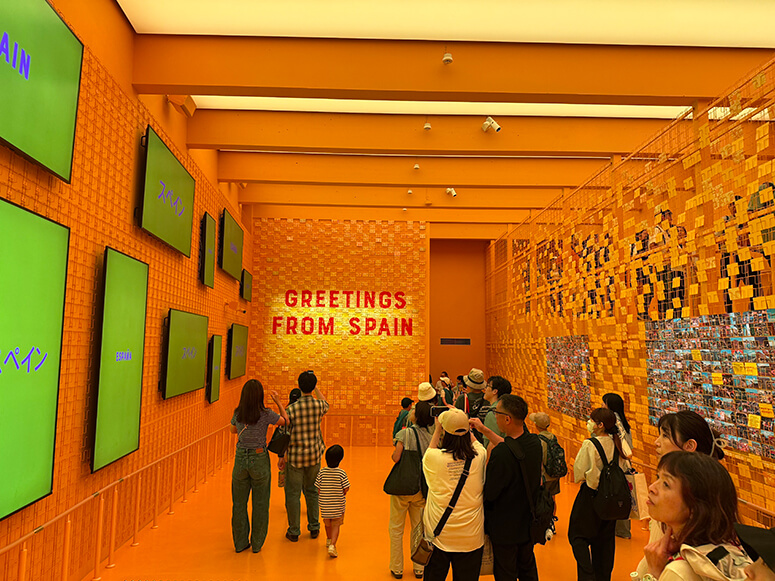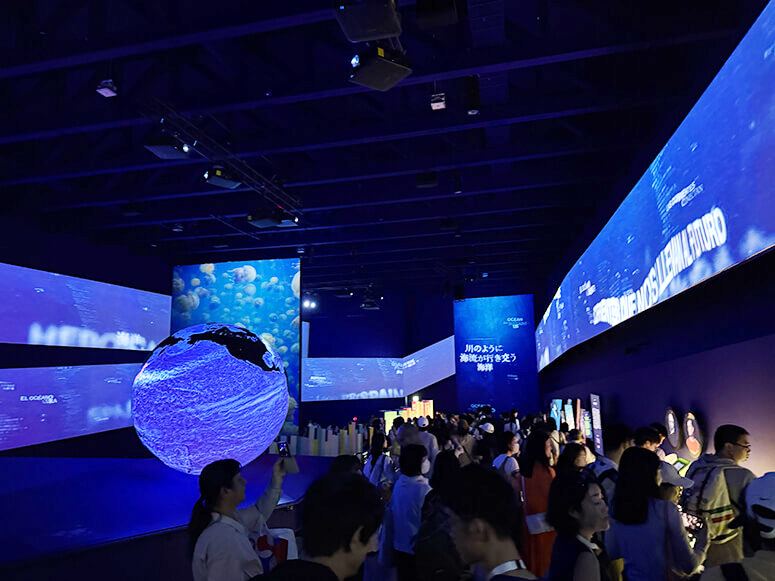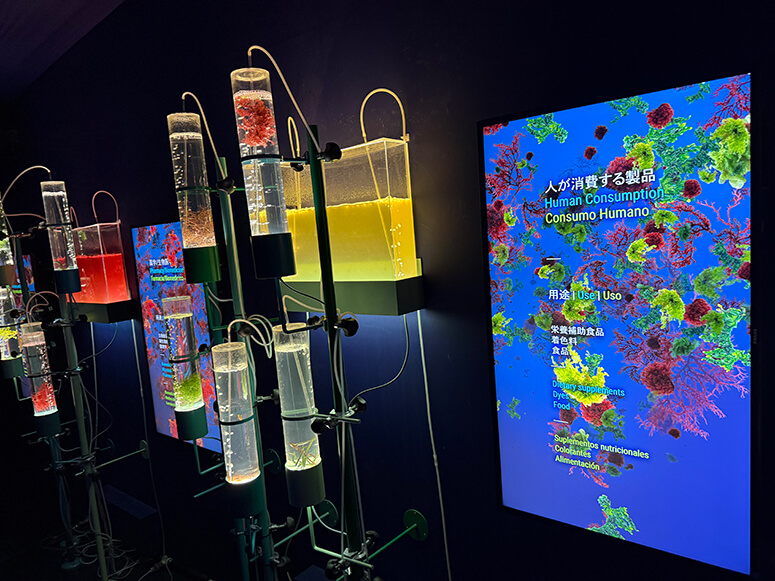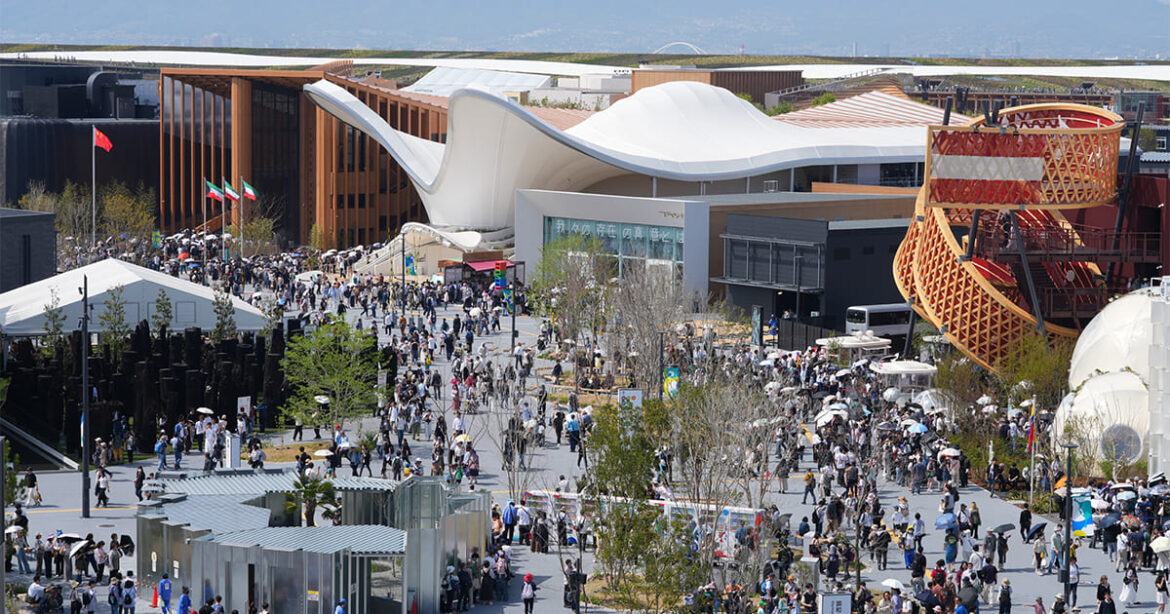The World Expo happens only once every five years. It is a grand collaboration of many countries, and this year, 158 countries were involved and a total of 188 pavilions. Attendance is 24 million (as of late September), compared to the 64 million who visited the previous Osaka Expo in 1970. That is also because the 1970 Expo sat on 330 hectares compared to this year’s 155. The 2020 Dubai Expo was one of the largest at 438 hectares, while the 2010 Shanghai Expo was pegged the largest at 528 hectares.
The 2000 Hanover Expo was focused on “Humanity, Nature, Technology,” specifically balancing the impact of technology on the environment and society. The 2010 Shanghai Expo centered on “Better City – Better Life,” the 2015 Milan Expo tackled food security with the theme “Feeding the Planet, Energy for Life,” and the 2020 Dubai Expo was all about “Connecting Minds, Creating the Future.”
While the successful expos above focused on macro concepts, the current expo is the first World Expo on the theme of the intrinsic value of life and the quality of individual existence. The core theme, “Designing Future Society for Our Lives,” had three sub-themes, which were also followed in grouping the pavilions. These were “Saving Lives” (protection and health), “Empowering Lives” (potential and quality), and “Connecting Lives” (community and society).

The entrance to the Spanish pavilion involves climbing a lot of steps reminiscent of the Spanish Steps and the vast plazas across Spain.
It was impressive how the whole expo was conceptualized to manage the more than 200,000 visitors per day. There was a massive, circular, elevated wooden walkway known as the Grand Ring, designed by multi-awarded Japanese architect Sou Fujimoto. There were many ways to access the viewing leve—via escalator, elevator, and stairs.
The organizers invited us to consider universal human challenges like aging and infectious diseases versus aspirations like longevity and well-being on a more intimate and experiential level.

You exit the Spanish pavilion in a sunny hallway full of postcards and videos inviting visitors to go to Spain. From “postcards to posts,” they encourage experiencing what they see so they can post it themselves in their socials.
Several pavilions touched on the “Blue Economy,” which, according to the World Bank, is the “sustainable use of ocean resources for economic growth, improved livelihoods, and jobs while preserving the health of ocean ecosystems.” The pavilions at the Osaka Expo 2025 that had a strong focus on this subject were Portugal, Spain, Bahrain, Belgium, Indonesia, and Monaco.
The theme of the Portugal pavilion was “Ocean, The Blue Dialogue,” which showcased the country’s deep historical and cultural ties to the sea. The exterior alone proudly expressed this maritime bond. Japanese architect Kengo Kuma created a pavilion framed by hundreds of suspended ropes and fishing nets that moved and swayed like ocean waves.

Just like Portugal, Spain’s pavilion transports you to the blue ocean. Note the blue planet that proclaims one of the focal points of the pavilion.
“At a World Expo that asks what we can do to improve our societies and lives, Portugal dives once again into the oceans—our source of life, biodiversity, and connection to the world. Many years have passed since the unforgettable Expo ‘98, and many more since Portugal and Japan first met, but the challenges facing the planet remain. It is, therefore, with the future in mind and the well-being of us all that we will present in Osaka and in Portugal a Blue Dialogue of science, environment, economy, art, and culture in defense of our shared home: the blue planet,” shared Joana Gomes Cardoso, commissioner-general for Portugal at Expo 2025 Osaka.
As we exited the immersive exhibits, we were treated to a final video on a floor-to-ceiling encompassing screen, which was like the ocean talking to us personally. The ocean’s message: “I have taken good care of you. I embrace you. I feed you. I even play with you. Your whole life depends on me. If you melt my glaciers, I will flood your home. If you dump garbage on me, I will send them back to you. If you extract all my resources today, there will be nothing left to give you tomorrow. Let me tell you, it’s in my nature to create. I’m not the one in danger. You are. Get back to your true nature. You were born in water. You are part of me.”
Spain’s pavilion focused on “The Kuroshio Current,” which has linked Japan and Spain for centuries. The ocean and the sun were the focal points since they were responsible for life on the planet as well as the national identities of the two countries. The sun and the ocean defined the geography, culture, and way of life of both the Spaniards and Japanese.
The Spanish pavilion exhibited three key concepts. First, the maritime connection—the Manila Galleon or “tornaviaje,” which was the historical trade route. Second, the sun and the ocean—the sun symbolized the meeting of East (Japan) and West (Spain), with the ocean as the unifying resource leading to important discussions on the Blue Economy, sustainability, and marine biodiversity. Third, sustainability and circularity, reflected in the pavilion’s architecture, pertained to Spain’s commitment to circular economic practices.

Spain’s cutting-edge research on commercial algae-based innovations are geared towards a circular, resource-efficient economy. Studies are focused on their use as food, cosmetic ingredient, animal feed, and even biofuel.
The “Currents Towards the Future” zone of the pavilion showcased Spain’s cutting-edge research on the commercial potential of utilizing marine resources sustainably toward a circular, resource-efficient economy. Algae-based innovations were on exhibit for their multiple potentials. As food, these marine microorganisms can be a sustainable source of protein, vitamins, and minerals for human consumption. As animal feed, the highly nutritious and sustainable substitute can replace conventional sources. The bioactive compounds in algae are utilized in cosmetics for anti-aging and moisturizing. Spain also has ongoing research on developing algae-based biofuels.
Due to the long waiting lines (some up to three hours), I only personally visited the pavilions of Spain and Portugal and missed the other pavilions that also had the ocean as the central theme. The other pavilions, according to the Osaka Expo 2025, were Bahrain, Monaco, Belgium, and Indonesia.
The Bahrain pavilion was inspired by the freshwater springs and the sea around the country. The pavilion focused on the relationship between water, life, and heritage. The exhibits showed how a nation manages scarce freshwater resources and its reliance on the ocean.
Belgium’s pavilion focused on clean water, with emphasis on the critical connection between water conservation, environmental well-being, and public health through innovative technology. Monaco, meanwhile, used its pavilion to highlight ocean conservation due to its unique relationship with the Mediterranean Sea and its leadership in marine research.
The pavilion of Indonesia highlighted its extensive maritime heritage and its efforts in sustainability and biodiversity. They showcased their innovative seaweed-based, environment-friendly packaging and the use of Plana wood (made from rice husks) and other materials from recycled plastic.
The ocean is valuable to our well-being and longevity. The resonant final message from the Portugal Pavilion—“I’m not the one in danger. You are. Get back to your true nature. You are part of me.”—serves as a potent call to action, urging every visitor to integrate lessons on sustainable consumption into their own future.


AloJapan.com